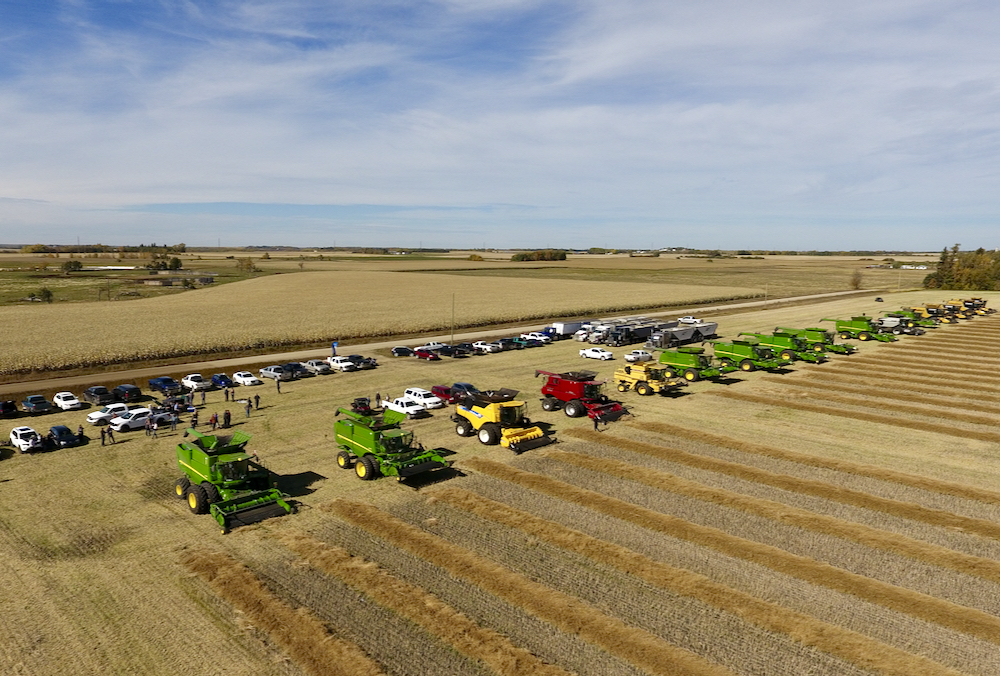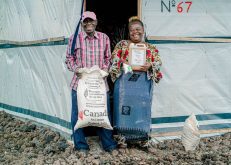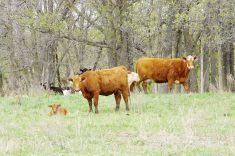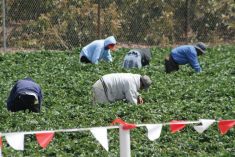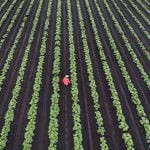Even though it was a stressful year, that didn’t stop producers from across the province from stepping up once again for the Canadian Foodgrains Bank.
And some produced some surprising results.
“We were very dry, but I guess we got the right rain at the right time, because the crop grew well and with record prices, it was our best return yet,” said Colin Boender, secretary for the Leduc and District Growing Project.
The group, now in its 22nd year, managed to donate $177,000 to the Foodgrains Bank this fall from the canola grown on 150 acres.
Read Also
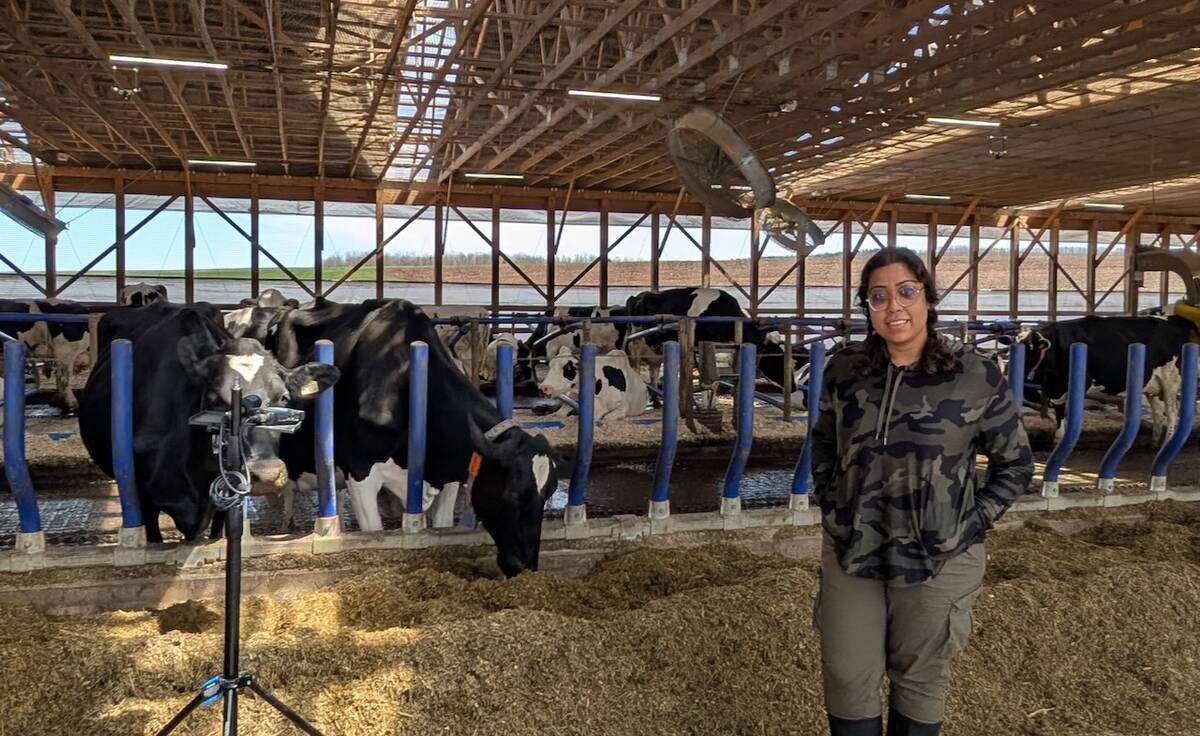
Moo translator and methane measures: There’s an app for that
Dalhousie University researchers use artificial intelligence to create new dairy farm apps that analyze cattle sounds and measure methane.
There are about 40 growing projects in Alberta, although not all of them are active every year. And since groups organizing the growing projects have until the end of the year to submit their donations, there’s not a final tally yet, said Julie Derksen, support relations manager for the Canadian Foodgrains Bank.
“It’s hard to say, because the ones that have reported have done well financially,” she said. “I think it’s the high commodity prices that had an impact, particularly on our projects in central Alberta.
“We have a number of projects in Leduc, Ponoka, Lacombe and even farther north, they’re doing fairly well this year.”
A lot of factors beside yields go into how much money is raised. Typically some or all of the inputs are donated and often there are other fundraisers that go along with growing and donating a crop (although the pandemic has had an effect on events like community dinners).
“We haven’t noticed a dollar value difference, but we haven’t analyzed the yields,” said Derksen. “We also keep track of how many acres and some of those informal measures and we haven’t got a full picture on that yet.”
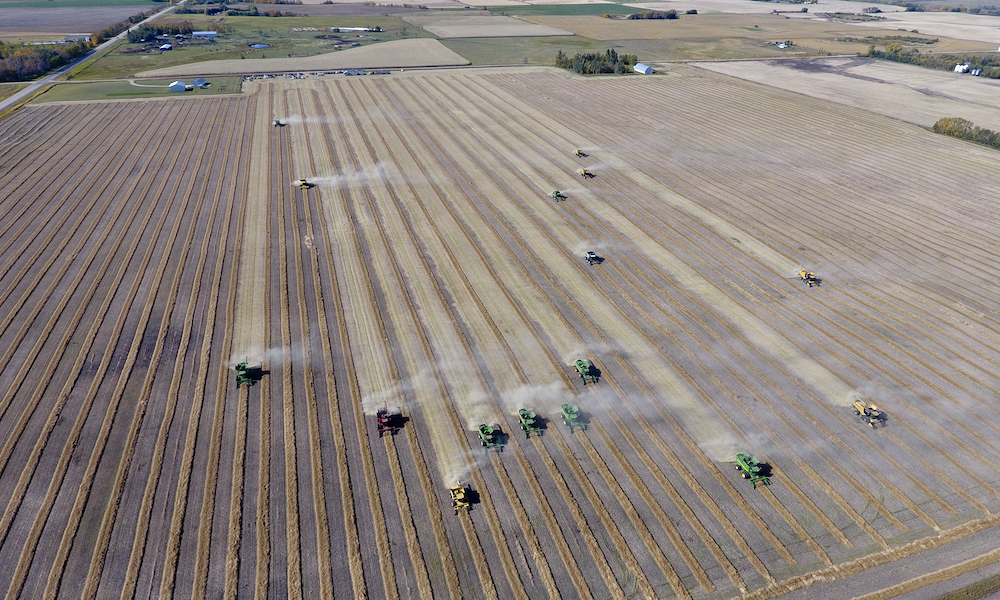
The Leduc and District Growing Project has 17 members on its organizing committee who oversee the project from start to finish, said Boender. They rent the same field every year, with the landowner also supporting the project. Having access to the same land every year provides a lot of stability, he said.
Access to land is key to successful growing projects, said Derksen.
“Finding land is a factor because prices are going up and land is just more scarce,” she said.
The other critical ingredient is the people and their commitment, she added.
Boender agrees.
“This project happens not just because of the farmers who come together to do the actual seeding, spraying and combining,” he said.
Numerous donors from the community, including a car dealership and a parts supply company, make donations every year.
Unfortunately, the project had to forgo its annual fall fundraising dinner for the second year in a row due to COVID-19. The Leduc group kept its harvest day small, and didn’t call any media or advertise the event. About 16 combines showed up on harvest day.
“It was straightforward,” said Boender. “Everything was covered off, and the prices were double what they normally would be. We had an average crop.”
The project was one of 35 in the province that received free hail insurance from Agriculture Financial Services Corporation and inputs were covered off by donations, although the rising cost of the latter is a concern going forward.
“Next year might be a trickier year because of all the concerns with fertilizer and chemical and the concerns of getting all of these things, and the skyrocketing prices,” said Boender, adding he’s hoping the group will be able to have a fundraising dinner next year.
Derksen is hopeful that the donations this year will still be quite high.
“One of the strengths of growing projects is that they are so strongly connected to communities that even if events don’t happen, the donations to the growing projects are actually quite strong,” she said.
“We’ve been watching and waiting to see what the impact is. Currently, it’s looking pretty steady for us, in terms of actual income.”
The funds raised are matched by the Canadian government on a four-to-one basis, up to a maximum of $25 million every year, with Ottawa recently renewing that arrangement for another three years.
The Foodgrains Bank is a partnership of 15 churches and church agencies and in its last fiscal year provided $49 million of assistance for 989,000 people in 33 countries. The aid consists of both emergency food assistance and what it calls “long-term response” efforts such as training and projects to make a local area more food secure.
(Descriptions of specific projects can be found in the Our Work section at foodgrainsbank.ca.)


